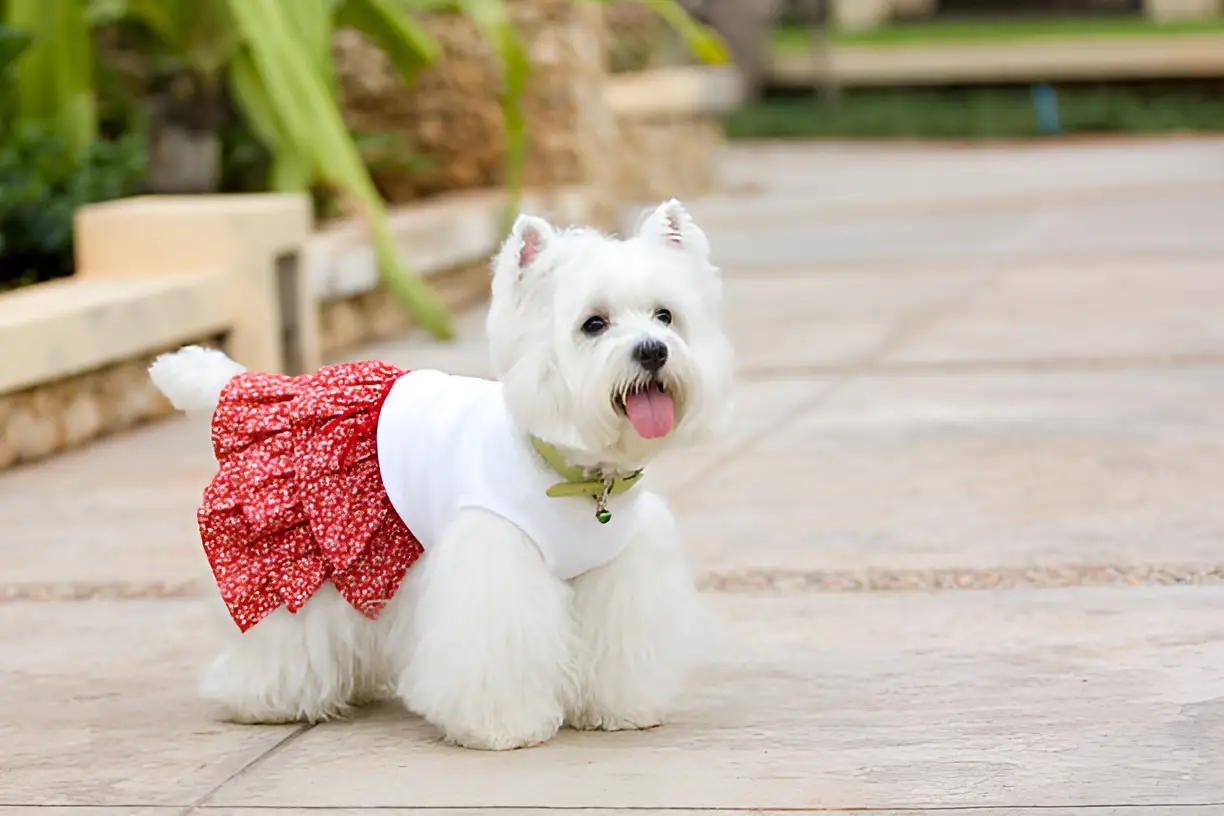Dogs’ reactions to being dressed up vary widely; some enjoy the attention and comfort, while others may feel uncomfortable or stressed. Dressing up dogs has become increasingly popular, with pet owners adorning their furry friends in everything from cute costumes to practical winter coats. However, whether dogs actually enjoy being dressed up is a topic of much debate. This comprehensive guide will explore the factors that influence a dog’s reaction to clothing, the benefits and drawbacks of dressing up dogs, and tips for ensuring your pet’s comfort and well-being.
Understanding Dogs’ Reactions to Clothing
Individual Preferences: Just like humans, dogs have individual preferences. Some dogs may enjoy the attention and warmth that clothing provides, while others may find it restrictive and uncomfortable.
Breed and Coat Type: Certain breeds with thin or short coats, such as Greyhounds and Chihuahuas, may appreciate the added warmth of a sweater or coat, especially in cold weather. Conversely, breeds with thick, double coats, like Huskies, may overheat and feel uncomfortable in clothing.
Early Exposure: Dogs that are introduced to clothing at a young age are more likely to tolerate or even enjoy being dressed up. Early positive experiences with clothing can help desensitize dogs to the sensation.
Benefits of Dressing Up Dogs
Protection from the Elements: Clothing can provide protection from harsh weather conditions. In cold climates, a well-fitted coat or sweater can help keep dogs warm and prevent hypothermia. Raincoats can keep dogs dry and comfortable during wet weather.
Skin Protection: For dogs with skin conditions or allergies, clothing can act as a barrier to prevent them from scratching or licking affected areas. This can aid in the healing process and prevent further irritation.
Visibility and Safety: Reflective vests or brightly colored clothing can enhance a dog’s visibility during walks, especially in low-light conditions. This can help prevent accidents and keep your dog safe.
Fashion and Fun: Dressing up dogs can be a fun way for pet owners to express their creativity and bond with their pets. Many dogs enjoy the extra attention and affection they receive when dressed up.
Drawbacks of Dressing Up Dogs
Discomfort and Stress: Some dogs may find clothing uncomfortable or stressful. Signs of discomfort include trying to remove the clothing, excessive scratching, or freezing in place. It’s important to pay attention to your dog’s body language and remove the clothing if they seem distressed.
Overheating: Dogs with thick coats or those living in warm climates can overheat if dressed in clothing. It’s crucial to choose appropriate clothing for the weather and monitor your dog for signs of overheating.
Restricted Movement: Ill-fitting clothing can restrict a dog’s movement and cause discomfort. Ensure that any clothing you put on your dog fits properly and allows for natural movement.
Skin Irritation: Some materials can cause skin irritation or allergic reactions in dogs. Choose clothing made from soft, breathable fabrics and avoid anything that could rub or chafe your dog’s skin.
Tips for Dressing Up Your Dog
Start Slowly: If your dog is not used to wearing clothing, start with short periods and gradually increase the duration. Use positive reinforcement, such as treats and praise, to create a positive association with the clothing.
Choose the Right Fit: Ensure that the clothing fits your dog properly. It should be snug but not too tight, allowing for natural movement and comfort. Measure your dog and refer to sizing charts when purchasing clothing.
Monitor Your Dog: Always monitor your dog when they are wearing clothing. Look for signs of discomfort or stress and remove the clothing if necessary. Never leave your dog unattended while dressed up.
Consider the Weather: Choose clothing appropriate for the weather. Lightweight, breathable fabrics are best for warm weather, while thicker, insulated materials are suitable for cold conditions.
Prioritize Safety: Avoid clothing with small parts or accessories that could be swallowed or pose a choking hazard. Ensure that the clothing does not obstruct your dog’s vision, hearing, or ability to breathe.
Conclusion
Whether dogs like being dressed up depends on individual preferences, breed, and early exposure to clothing. While some dogs enjoy the attention and warmth that clothing provides, others may find it uncomfortable or stressful. By understanding your dog’s needs and preferences, you can make informed decisions about dressing them up. Always prioritize your dog’s comfort and safety, and use positive reinforcement to create a positive experience.
The photo featured below the post headline is Credit: fotoposition/istockphoto
I hope you find this post helpful and informative. If Yes’ feel free to share it with your friends!
Frequently Asked Questions
How can I tell if my dog likes being dressed up?
Pay attention to your dog’s body language. If they seem relaxed and happy, they likely don’t mind the clothing. Signs of discomfort include trying to remove the clothing, excessive scratching, or freezing in place.
Is it safe to dress up my dog in hot weather?
In hot weather, it’s best to avoid dressing your dog in clothing that could cause overheating. Choose lightweight, breathable fabrics if you must dress them up, and monitor them for signs of heat stress.
Can clothing help with my dog’s anxiety?
Some dogs find comfort in wearing snug-fitting clothing, such as anxiety wraps or vests. These garments can provide a sense of security and help reduce anxiety in certain situations.
What should I do if my dog hates wearing clothes?
If your dog clearly dislikes wearing clothes, it’s best to respect their preferences and avoid dressing them up. Focus on other ways to bond and have fun with your dog, such as playing games or going for walks.
Are there any health benefits to dressing up my dog?
Clothing can provide protection from the elements, help with skin conditions, and enhance visibility and safety. However, it’s important to choose appropriate clothing and ensure your dog’s comfort and well-being.

